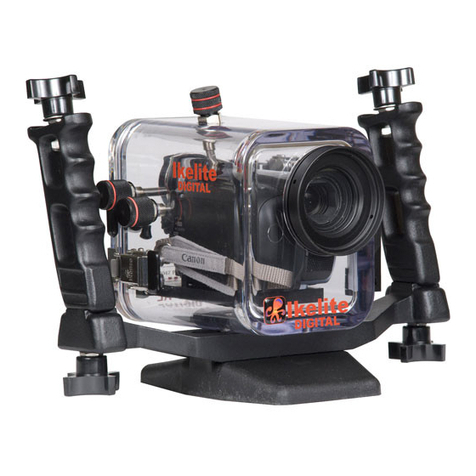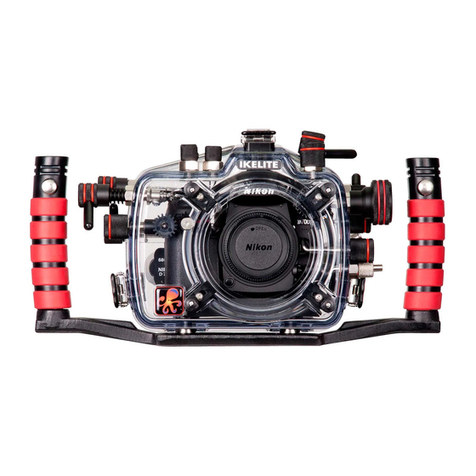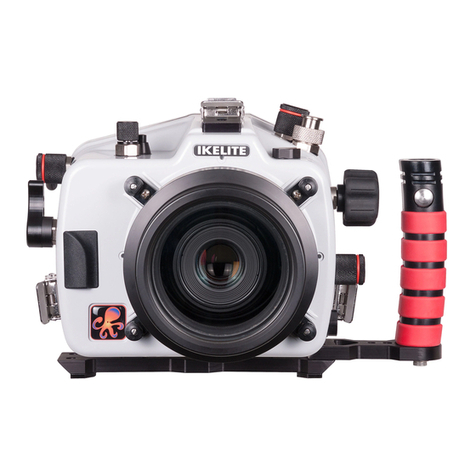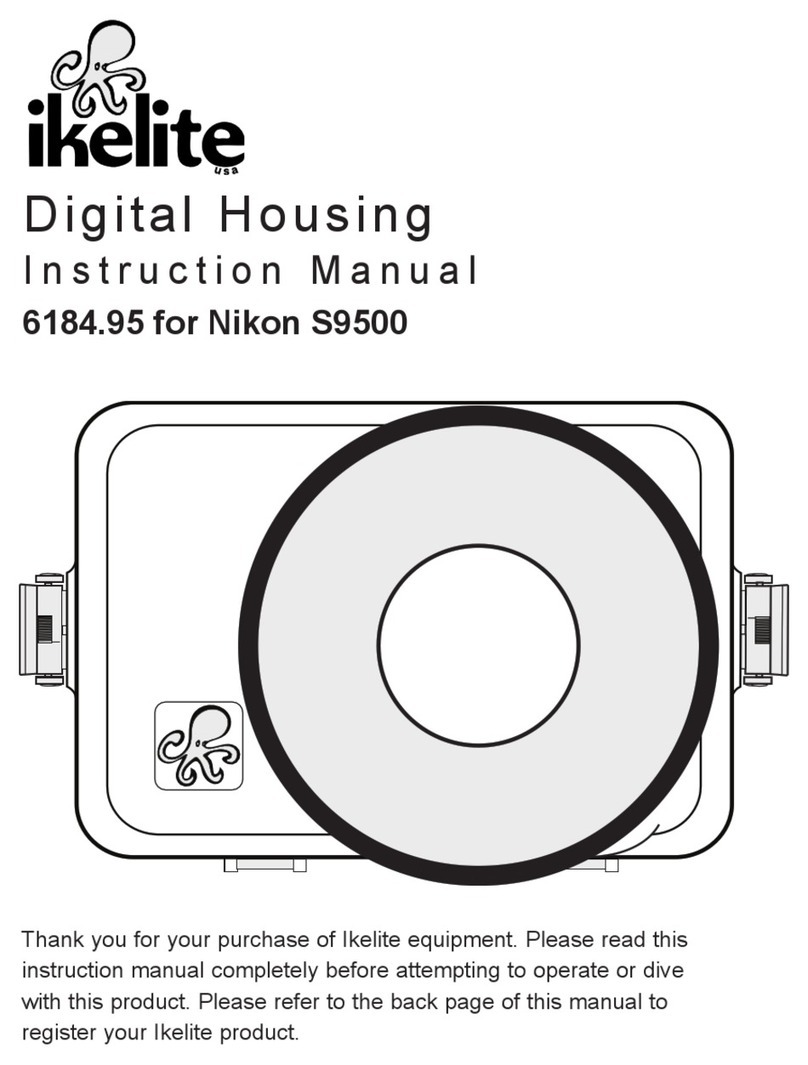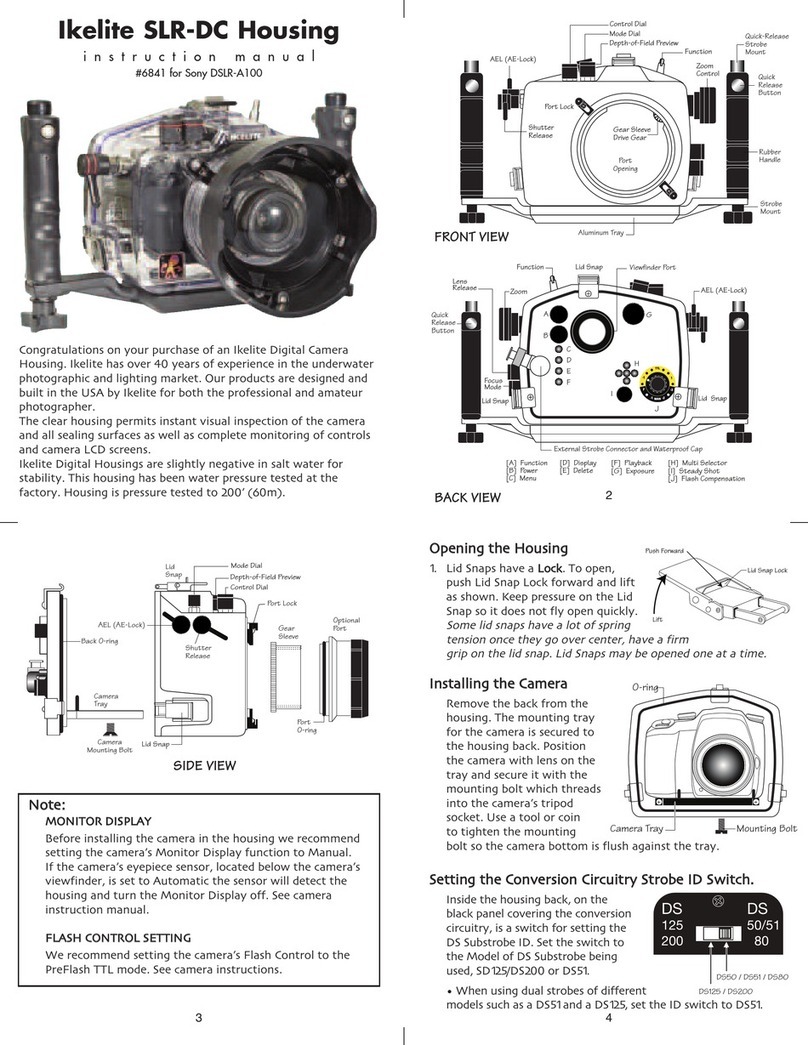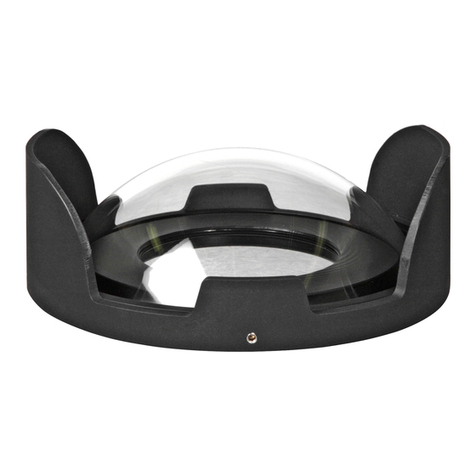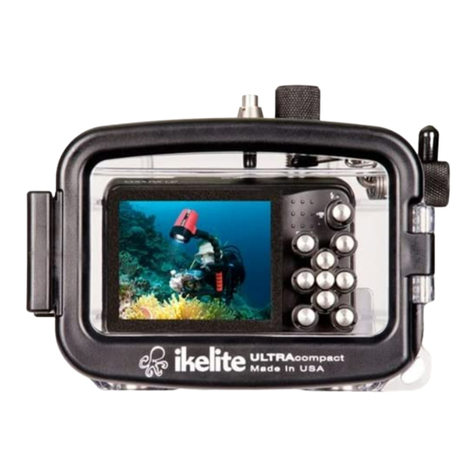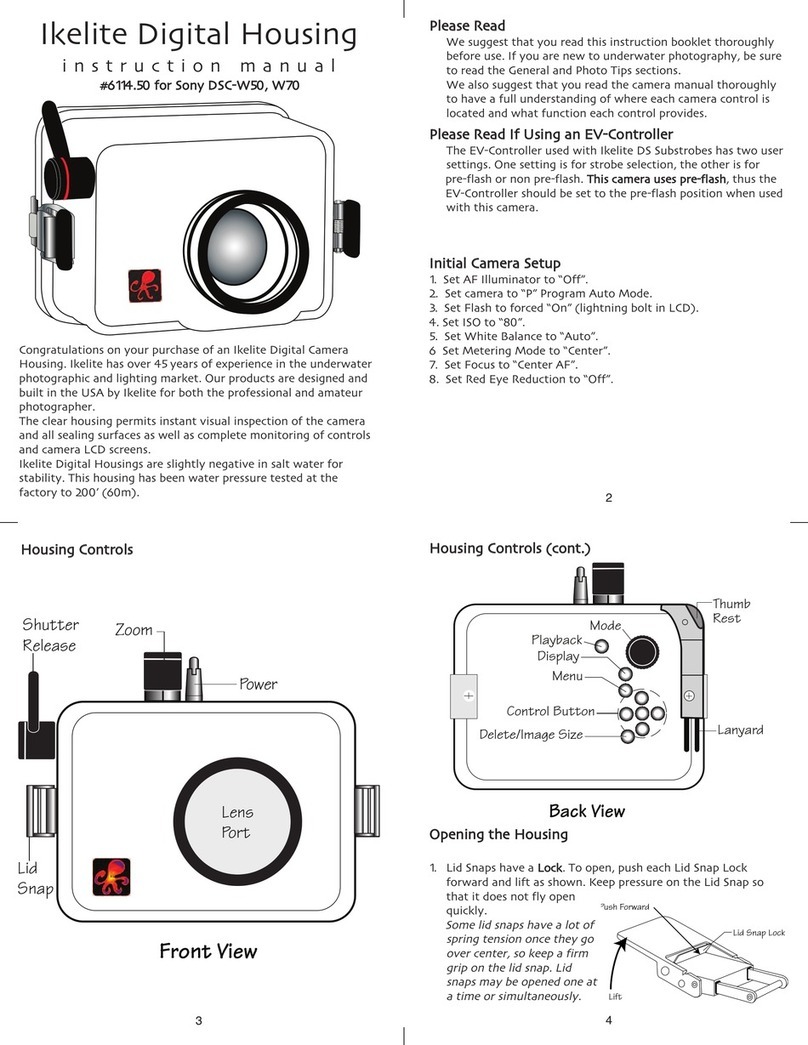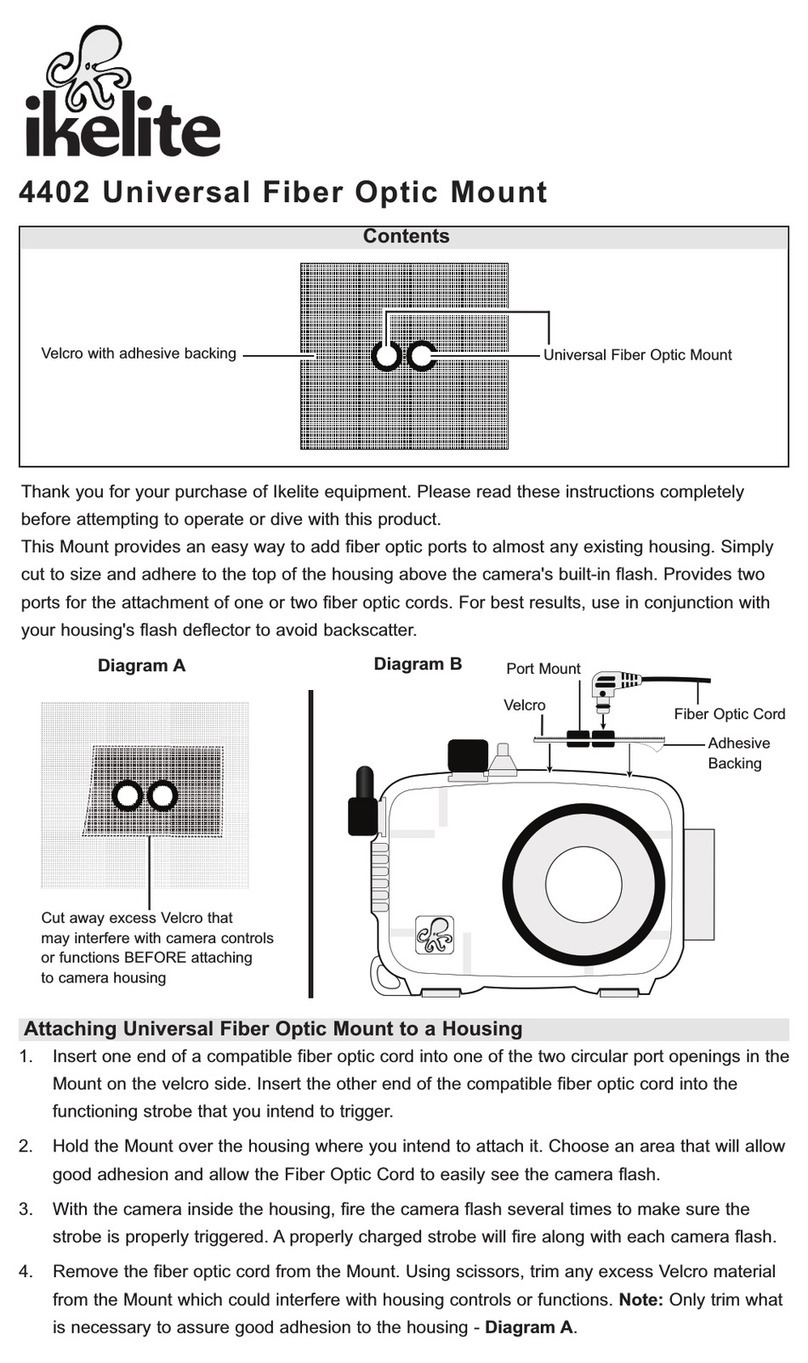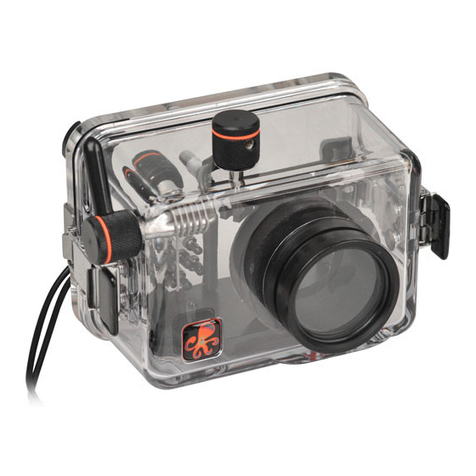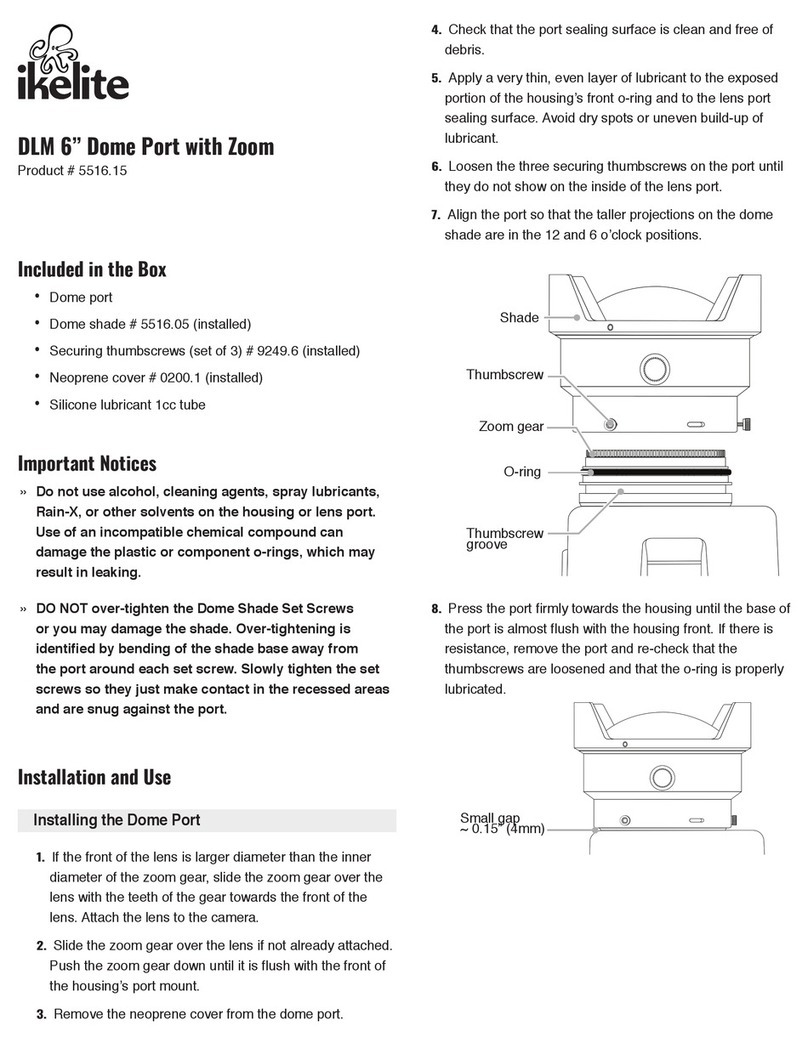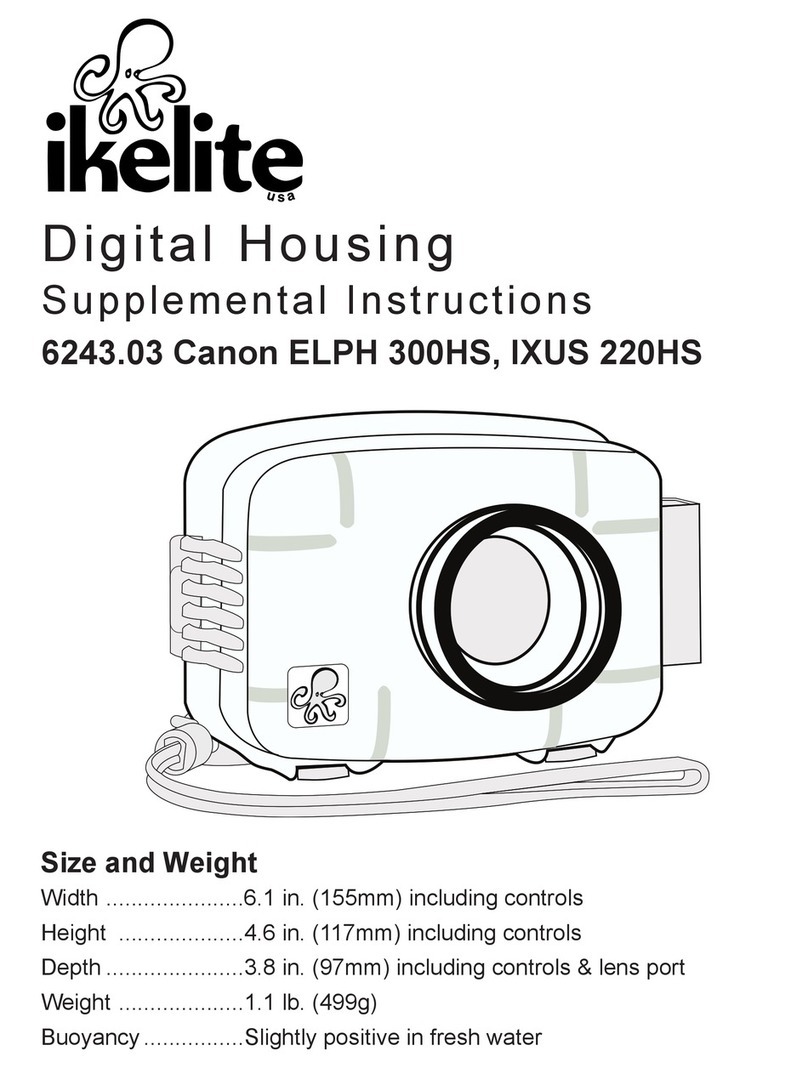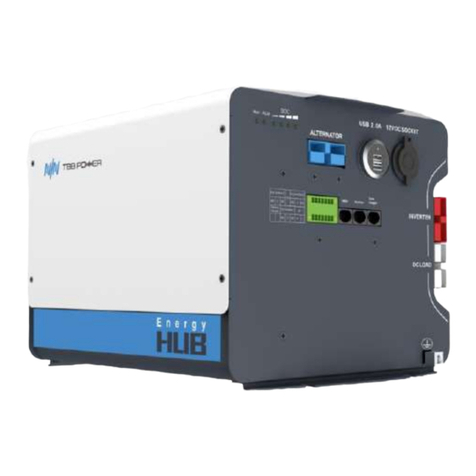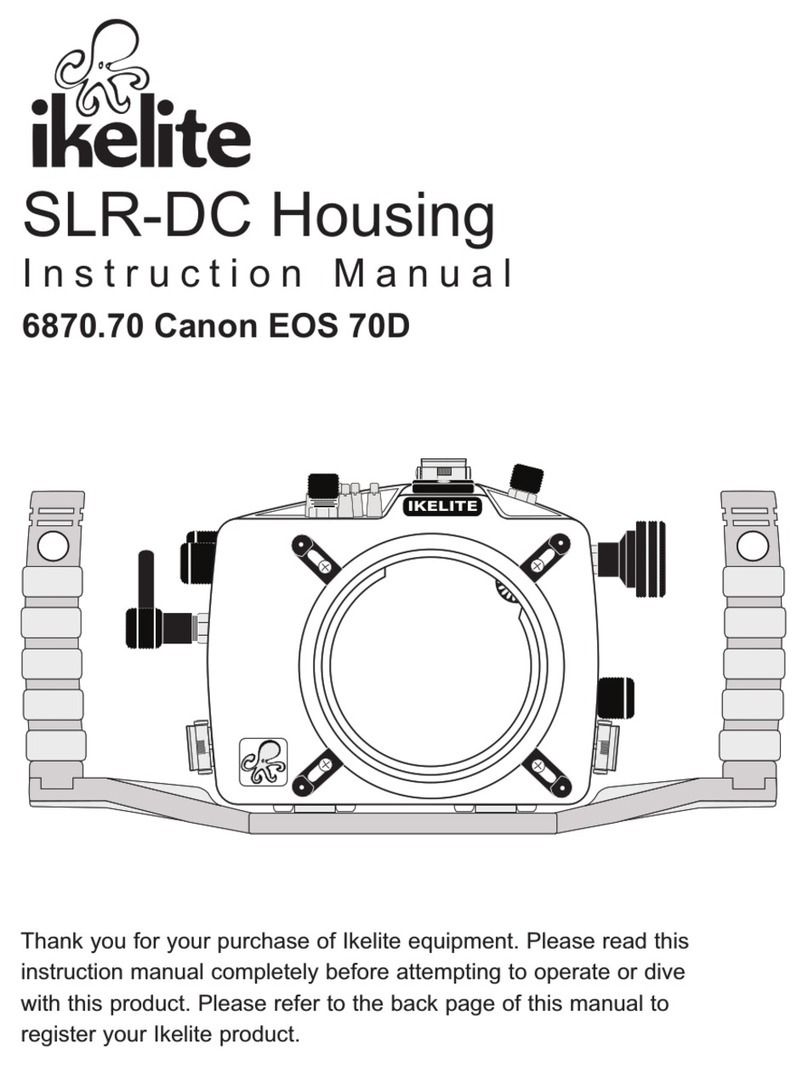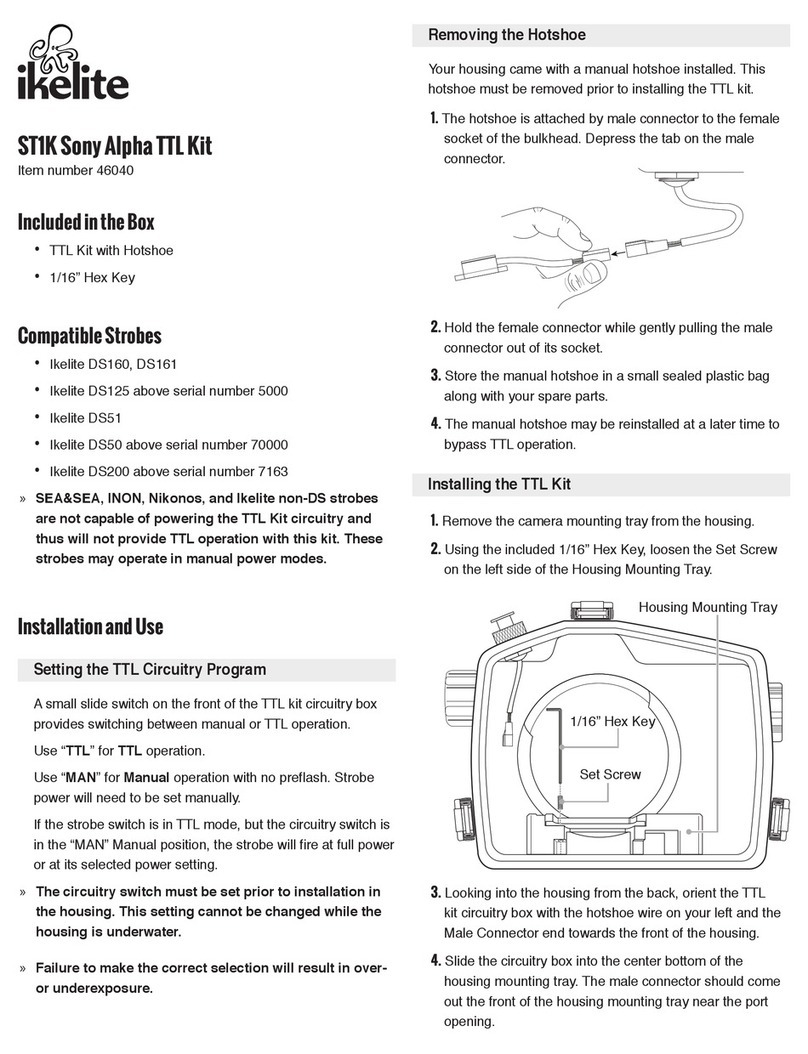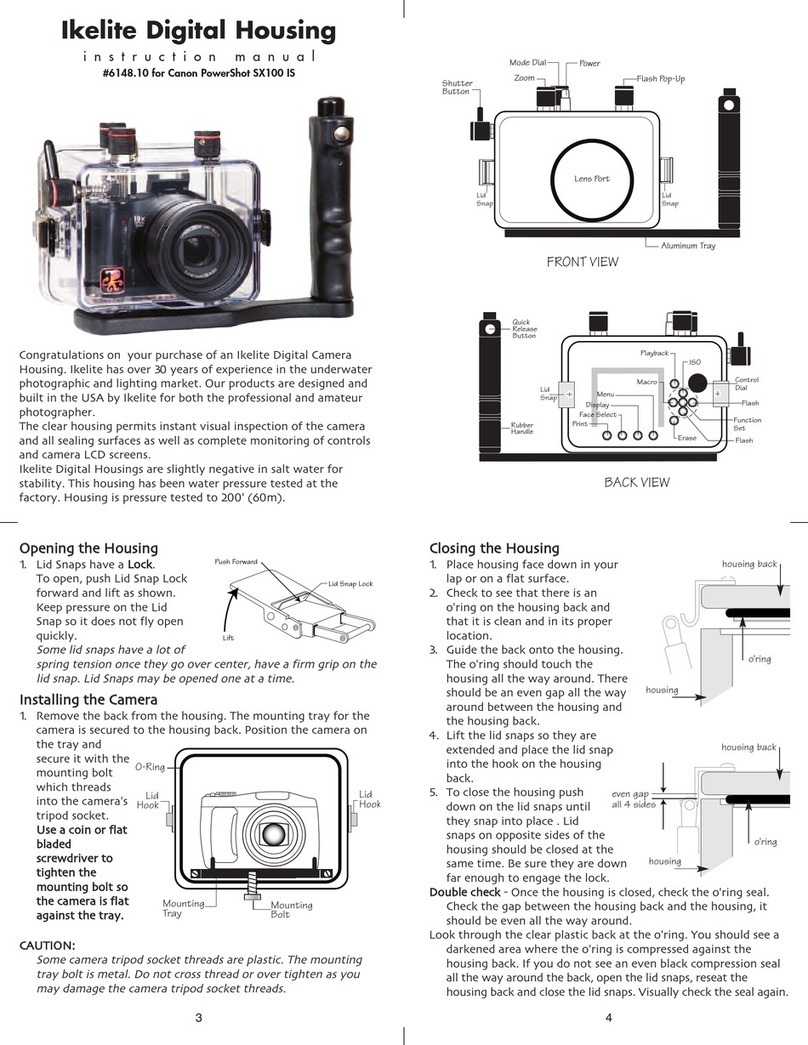
3. Some of the controls have a short shaft and cannot be pulled
out exposing the shaft for lubrication. In the unlikely event one
of these controls sticks or becomes difficult to operate you can
remove the control from the housing and lubricate it, or return
the housing to Ikelite for maintenance. To remove the control,
loosen the set screw in the knob (allen wrench required) and
then remove the knob. If there is salt or dirt build-up on the
exposed control shaft, clean the shaft. Open the housing and
gently slide the control shaft out of the control gland. Clean and
lightly lubricate the shaft, including the end of the shaft. Slide
the shaft back into the control gland and gently slide it back
and forth a few times without fully removing the shaft from
the gland. When replacing the knob, note the flat area on the
shaft. The set screw in the knob should tighten down against
the flat area on the control, so the knob does not turn on the
shaft.
Loosen set screw
(allen wrench re uired)
Flat
Tighten set screw down
against this area when
replacing the knob.
housing gland
control
shaft
25
Lubricate end of shaft
before reinserting into
gland
26
G
Ge
en
ne
er
ra
al
l T
Ti
ip
ps
s
1. You should completely assemble and test your system in a
swimming pool before using it in open water.
2. It is a good idea to start each photo dive with a fully charged
battery in the camera and strobes.
3. As soon as you enter the water, take a moment and check the
housing to see that it is properly sealed.
4. Next, check to see if there are any bubbles on the face of the
port. If there are, take your finger and remove them. If there
are bubbles on the lens port they can produce soft focus spots
in your photographs.
5. Set Image Resolution to the Highest JPG format available or
RAW. Higher resolution settings are required for printing. High
resolution images can easily be reduced in size with software,
and retain their original quality. A Low resolution image can be
enlarged with software but much of the quality will be lost.
6. ISO 100 and “center-weighted averaging” metering are
recommended.
7. Digital images are usually transferred to the computer where
their appearance can be fine tuned. Many of the image
manipulation programs make you think you can magically
correct any image taken and make a good picture. One thing to
be aware of is that if an image is overexposed, some of the
color information in the file is missing. If the color is missing,
you cannot adjust it. If images are underexposed, the color and
detail may be there. Therefore if it is dark, you can adjust it to
some degree. So if you error in exposure, it is better to have the
image slightly underexposed rather than overexposed.
27
PPhhoottoo TTiippss
1. The number one rule in underwater photography is to eliminate
as much water between the camera and subject as possible. Get
as close as you can to the subject, then use the zoom. If you are
using flash, subjects beyond 6 feet (1.8m)will not have much
color.
2. Some digital cameras have a slight lag time between when you
press the shutter release button and the camera actually takes
the picture. It only takes a slight amount of pressure to trip the
shutter. If the shutter doesn’t trip immediately don’t push down
harder on the shutter control, as you may damage the camera.
Hold the camera steady a second or two after pressing the
shutter release button.
3. Do not shoot down on subjects as they will quite often blend
into the background and be difficult to see in the photograph.
Shoot subjects straight on or shoot up at a slight angle using
the blue water as a contrasting background.
4. Underwater flash is used to restore the warmer colors filtered
out by the water as well as to illuminate the subject.
5. For balanced lighting, meter the background and set the camera
aperture accordingly. Use TTL, adjust the strobe’s power
settings, or move the strobe closer or farther away to properly
expose the subject, with the chosen camera aperture.
IIkkeelliittee LLiimmiitteedd WWaarrrraannttyy
All Ikelite products are warranted against any manufacturing
defects for a period of one year from the date of purchase.
Defective products should be returned prepaid to Ikelite. Ikelite
will, at its discretion, repair or replace such products, and will
return to customer prepaid. All other claims of any nature,
including but not limited to bulb failure, are not covered. Except
as mentioned above, no other warranty expressed or implied,
applies to this Ikelite product.
RReettuurrnniinngg PPrroodduuccttss ffoorr SSeerrvviiccee
Ikelite is most interested in preforming any service to assure that
all products perform as intended. For repair or service, return the
product to the address below with your name, address, phone
number, and a brief description of the problem. Evidence of
purchase date must be provided to obtain warranty service.
Normal service turnaround time is approximately 2-3 weeks.
IIkkeelliittee UUnnddeerrwwaatteerr SSyysstteemmss
5500 WW 3333rrdd SSttrreeeett
IInnddiiaannaappoolliiss,, IINN 4466220088 UUSSAA
WWhheenn rreettuurrnniinngg pprroodduuccttss sseenndd ““aattttnn.. RReeppaaiirr DDeepptt..””
331177--992233--44552233
““ggeenneerraall qquueessttiioonnss”” ee--mmaaiill:: iikkeelliittee@@iikkeelliittee..ccoomm
wwwwww..iikkeelliittee..ccoomm
DDiiggiittaall 66885533..3300--0033--00990088
